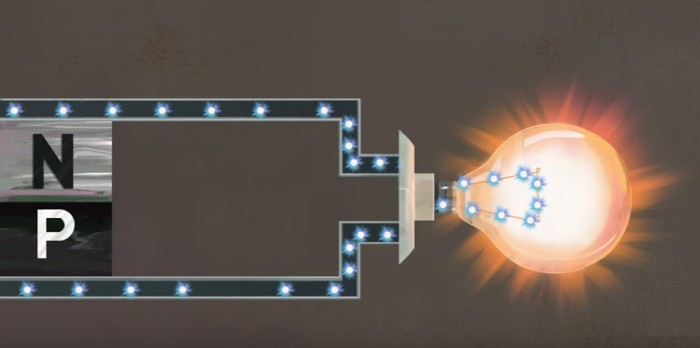
The Earth intercepts a lot of solar power: 173 thousand terawatts, that’s ten thousand times more power than the planet’s population uses. So is it possible that one day the world could be completely reliant on solar energy?
To answer that question,
We first need to examine how solar panels convert solar energy to electrical energy.Solar panels are made up of smaller units called solar cells.The most common solar cells are made from silicon, a semiconductor that is the second most abundant element on Earth.
The internal configuration of the solar panel
In a solar cell,
Crystalline silicon is sandwiched between conductive layers.Each silicon atom is

connected to its neighbors by four strong bonds, which keep the electrons in place so no current can flow.
Here’s the key: a silicon solar cell uses two different layers of silicon, an n-type silicon has extra electrons, and p-type silicon has extra spaces for electrons, called holes.
The movement of electrons between an n-type and p-type
Where the two types of silicon meet, electrons can wander across the p/n junction, leaving a positive charge on one side and creating negative charge on the other.
You can think of light as the flow of tiny particles called photons, shooting out from the Sun. When one of these photons strikes the silicon cell with enough energy, it can knock an electron from its bond, leaving a hole. The negatively charged electron and location of the positively charged hole are now free to move around.
But because of the electric field at the p/n junction, they’ll only go one way.The electron is drawn to the n-side, while the hole is drawn to the p-side.
Pump electronics and power generation

The mobile electrons are collected by thin metal fingers at the top of the cell. From there, they flow through an external circuit, doing electrical work, like powering a lightbulb, before returning through the conductive aluminum sheet on the back.
Each silicon cell only puts out half a volt, but you can string them together in modules to get more power. Twelve photovoltaic cells are enough to charge a cellphone, while it takes many modules to power an entire house.
Electrons are the only moving parts in a solar cell, and they all go back where they came from. There’s nothing to get worn out or used up, so solar cells can last for decades.
The Solar energy we can use it to heat water.




Pingback: Solar panel with afternoon & night – Real Pages
Pingback: learn about solar power or panel, quickly – Real Pages